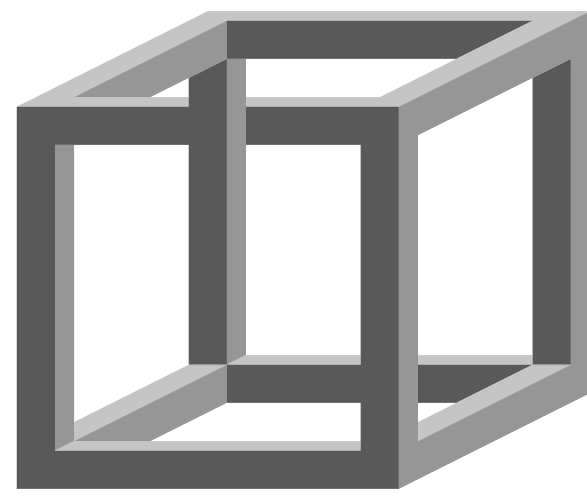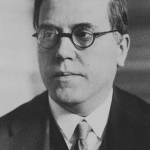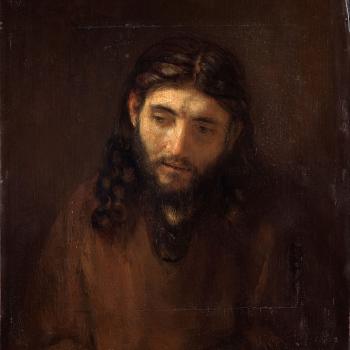
Atheist and anti-theist Bob Seidensticker, who was “raised Presbyterian”, runs the influential Cross Examined blog. He asked me there, on 8-11-18: “I’ve got 1000+ posts here attacking your worldview. You just going to let that stand? Or could you present a helpful new perspective that I’ve ignored on one or two of those posts?” He also made a general statement on 6-22-17: “Christians’ arguments are easy to refute . . . I’ve heard the good stuff, and it’s not very good.” He added in the combox: “If I’ve misunderstood the Christian position or Christian arguments, point that out. Show me where I’ve mischaracterized them.”
Such confusion would indeed be predictable, seeing that Bob himself admitted (2-13-16): “My study of the Bible has been haphazard, and I jump around based on whatever I’m researching at the moment.” I’m always one to oblige people’s wishes if I am able, so I decided to do a series of posts in reply. It’s also been said, “be careful what you wish for.” If Bob responds to this post, and makes me aware of it, his reply will be added to the end along with my counter-reply. If you don’t see that, rest assured that he either hasn’t replied, or didn’t inform me that he did. But don’t hold your breath.
Bob (for the record) virtually begged and pleaded with me to dialogue with him in May 2018, via email. But by 10-3-18, following massive, childish name-calling attacks against me, encouraged by Bob on his blog (just prior to his banning me from it), his opinion was as follows: “Dave Armstrong . . . made it clear that a thoughtful intellectual conversation wasn’t his goal. . . . [I] have no interest in what he’s writing about.”
And on 10-25-18, utterly oblivious to the ludicrous irony of his making the statement, Bob wrote in a combox on his blog: “The problem, it seems to me, is when someone gets these clues, like you, but ignores them. I suppose the act of ignoring could be deliberate or just out of apathy, but someone who’s not a little bit driven to investigate cognitive dissonance will just stay a Christian, fat ‘n sassy and ignorant.” Again, Bob mocks some Christian in his combox on 10-27-18: “You can’t explain it to us, you can’t defend it, you can’t even defend it to yourself. Defend your position or shut up about it. It’s clear you have nothing.” And again on the same day: “If you can’t answer the question, man up and say so.” And on 10-26-18: “you refuse to defend it, after being asked over and over again.” And again: “You’re the one playing games, equivocating, and being unable to answer the challenges.”
Bob’s cowardly hypocrisy knows no bounds. Again, on 6-30-19, he was chiding someone who (very much like he himself) was (to hear him tell it) not backing up his position: “Spoken like a true weasel trying to run away from a previous argument. You know, you could just say, ‘Let me retract my previous statement of X’ or something like that.” Yeah, Bob could! He still hasn’t yet uttered one peep in reply to — now — 36 of my critiques of his atrocious reasoning. As of 7-9-19, this is how Bob absurdly rationalizes his non-response: “He’s written several blog posts titled, in effect, ‘In Which Bob Seidensticker Was Mean to Me.’ Normally, I’d enjoy a semi-thoughtful debate, but I’m sure they weren’t.”
Bible-Basher Bob’s words will be in blue. To find these posts, word-search “Seidensticker” on my atheist page or search “Seidensticker Folly #” in my sidebar search (near the top).
*****
Bob’s article, “William Lane Craig Insults Islam and Misrepresents His Own Religion” (4-10-20; orig. 1-8-16) is absolutely classic, playbook Bob. He misrepresents prominent Christian philosopher and specialist in the theistic proofs, William Lane Craig’s and Christianity’s understanding of the Holy Trinity, even while he falsely argues that Dr. Craig has done so regarding his own belief-system. This is a new rock-bottom low, even by Bob’s ultra-subterranean philosophical and ethical standards.
And WLC . . . makes clear that he doesn’t even understand his own ridiculous doctrine. Here’s his approach to the Trinity.
[The Trinity] is the doctrine that God is tri-personal. It is not the self-contradictory assertion that three gods are somehow one God. Or that three persons are somehow one person. That is just illogical nonsense. [source]
That is indeed illogical nonsense. Unfortunately, it’s also Christian dogma. The fourth-century Athanasian Creed says in part, “The Father is God; the Son is God; and the Holy Ghost is God. And yet they are not three Gods; but one God.” You can try to get around it by saying that the three part is three persons and the one part is one god, but this is just wordplay.
Huh? Did I read that correctly? Unfortunately, I did. It’s one of the most convoluted pseudo-“arguments” that Bob has ever made (and again, that’s truly sayin’ somethin’). Dr. Craig’s statement is perfectly correct as to historic, orthodox, Christian trinitarian theology (Catholic, Orthodox, and Protestant alike). God is “tri-personal.” God is a Being such that He subsists in three equal and equally divine Persons (strange as that is for us to comprehend: as we have no direct, concrete experience of such a thing). This is contradictory to our experience but it isn’t, in and of itself, whereas, saying that God is one God and three Gods simultaneously or three persons but also one person are clearly self-contradictory notions.
Dr. Craig thus conveyed Christian trinitarian dogma. Then Bible-Basher Bob, in his infinite wisdom and boundless theological acumen, promptly informs his (often equally ignorant and illogical) readers that what Dr. Craig just noted was “not” Christian doctrine, actually is! The Athanasian Creed states precisely what Dr. Craig did:
Dr. Craig: [Trinitarianism] is not the self-contradictory assertion that three gods are somehow one God. [my bolding and italics]
Athanasian Creed: And yet they [Father, Son, and Holy Ghost] are not three Gods; but one God. [my bolding and italics]
Both statements are saying that three Divine Persons are one God, as opposed to three persons being one person, or three gods being one God. Trinitarianism presupposes the Jewish doctrine of monotheism: the doctrine of one God /Supreme Being / Creator. More than one “god” is polytheism, not trinitarianism.
WLC could argue that the definition of the Trinity is not stated in the Bible.
It’s not in one succinct statement, but it certainly is via deduction from the data of hundreds of biblical passages. And here is that data:
Jesus is God: Hundreds of Biblical Proofs (RSV edition) [1982; rev. 2012]
Holy Trinity: Hundreds of Biblical Proofs (RSV edition) [1982; rev. 2012]
For evidence, he could point out that the early Church needed centuries to reach agreement on it, and if it were obvious, it would’ve been dogma from the start. Illuminating the shaky foundation of this doctrine only undercuts his position further.
It was Christian belief from the start, but (as with all doctrines in theology) it developed through the centuries. This is common throughout many different fields, including science. Once more is learned, we have a more complex and multi-faceted understanding of a particular thing that we previously knew only broadly, partially, in vague generalities, or in bare outline.
Take, for example, the development in understanding of very small particles of matter. The atom was first understood in the modern scientific sense in the early 1800s: though it was talked about as early as the 5th century BC by Greek philosophers. Electrons were discovered in 1897 (within the lifetime of my two grandfathers), and the nucleus in 1909. Quantum mechanics came along in 1922, and the uncertainty principle in 1927. Then it was learned in 1964 (by which time I was already in school) that even smaller particles, called quarks, exist.
Likewise, the understanding of living things developed, too. Cells were discovered in 1665, and cell theory in 1839. DNA was discovered in 1869 and its molecular structure identified in 1953, etc. This biological understanding is undergoing constant development as well. It’s an imperfect analogy but the point is that knowledge grows through time, without necessarily being self-contradictory. That’s how trinitarianism is in theology. But it was in the Bible from the start. I summed up the evidence concisely in one 1000-word article: 50 Biblical Evidences for the Holy Trinity. I would even go so far as to say that the New Testament doctrine of God would become nonsensical, relentlessly self-contradictory gibberish, if not interpreted in a trinitarian fashion.
Craig continues:
[The Trinity] is the claim that the one entity we call God comprises three persons. That is no more illogical than saying that one geometrical figure which we call a triangle is comprised of three angles. Three angles in one figure. Three persons in one being.
Yes, a triangle is composed of three angles, but no, that is not a parallel to the Trinity. In fact, that commits the heresy called Partialism, the declaration that God is composed of three parts that make a whole. Other popular analogies that are also heretical for the same reason compare God to an egg (shell + white + yolk = egg) or to time (past + present + future = time) or to music (three notes make a chord).
Bob’s interpretation is absurd. Dr. Craig is not making an exact analogy. He was simply analyzing the nature of the Trinity logically and noting that it is no more illogical than saying that one triangle has three angles. He was not asserting “partialism.” Dr. Craig goes into the question of analogies for the Trinity in great depth in another article, “Is There a Good Analogy for the Trinity?” (8-6-12):
[T]he Trinity is unique and there is nothing that you can point to that is a strict analogy to it, or parallel to it. And that’s why I don’t like analogies, I don’t like to use analogies like the triple point of water, or water being steam and ice and liquid, these sorts of things. I just see no reason to think that there should be anything truly analogous to the Trinity. . . .
[W]hat I finally propose is that we need to think of God as a soul, an unembodied mind, endowed with three sets of rational faculties each of which is sufficient for personhood. And that will get you a doctrine of three persons in one being. . . .
But what I would ask the genuine seeker after truth, here, to look at is to say that we’re not providing an analogy to the Trinity, we’re not providing an analogy to God. What we’re trying to do here is to understand how you can have a tri-personal entity. How can you have an entity which is one being, one entity, and yet is three persons?
WLC is in good company, and C. S. Lewis in Mere Christianity makes the same mistake: “In God’s dimension, so to speak, you find a being who is three Persons while remaining one Being, just as a cube is six squares while remaining one cube.” Six squares are parts of a cube, just like Father, Son, and Holy Spirit are parts of God? Be careful—a heresy like that can send a guy to Hell.
Bob makes the same dumb mistake again. This is not what C. S. Lewis (my favorite author for over forty years) was arguing at all. He was a Christian trinitarian just as Dr. Craig is. Lewis explained exactly what he had in mind, in Mere Christianity (which can now be read online). He was trying to find a way to help human beings conceptually grasp a mode of being that is beyond our experience. Though it’s an imperfect analogy, I think it is a very excellent attempt (one of the best I’ve seen) to help people grasp that there are things beyond our full understanding that we can nevertheless (just barely) conceptualize. And so he argued as follows (in what was originally a radio talk):
You know that in space you can move in three ways—to left or right, backwards or forwards, up or down. Every direction is either one of these three or a compromise between them. They are called the three Dimensions. Now notice this. If you are using only one dimension, you could draw only a straight line. If you are using two, you could draw a figure: say, a square. And a square is made up of four straight lines. Now a step further. If you have three dimensions, you can then build what we call a solid body: say, a cube—a thing like a dice or a lump of sugar. And a cube is made up of six squares.
Do you see the point? A world of one dimension would be a straight line. In a two-dimensional world, you still get straight lines, but many lines make one figure. In a three-dimensional world, you still get figures but many figures make one solid body. In other words, as you advance to more real and more complicated levels, you do not leave behind you the things you found on the simpler levels: you still have them, but combined in new ways—in ways you could not imagine if you knew only the simpler levels.
Now the Christian account of God involves just the same principle. The human level is a simple and rather empty level. On the human level one person is one being, and any two persons are two separate beings—just as, in two dimensions (say on a flat sheet of paper) one square is one figure, and any two squares are two separate figures. On the Divine level you still find personalities; but up there you find them combined in new ways which we, who do not live on that level, cannot imagine. In God’s dimension, so to speak, you find a being who is three Persons while remaining one Being, just as a cube is six squares while remaining one cube.
Of course we cannot fully conceive a Being like that: just as, if we were so made that we perceived only two dimensions in space we could never properly imagine a cube. But we can get a sort of faint notion of it. And when we do, we are then, for the first time in our lives, getting some positive idea, however faint, of something super-personal—something more than a person. It is something we could never have guessed, and yet, once we have been told, one almost feels one ought to have been able to guess it because it fits in so well with all the things we know already.
WLC doubles down on his claim that Muslims (or anyone) pushing back against the Trinity is wrong.
Although this doctrine may seem strange to Muslims, once it is properly stated there is nothing illogical about it. It is a logically consistent doctrine, and therefore rationally unobjectionable.
Nothing illogical about it? You can’t even explain it without committing heresy!
But Dr. Craig hasn’t done that at all (nor has C. S. Lewis), and Bob hasn’t demonstrated that either man did this; he merely assumed what he was trying to prove (which is called circular reasoning or begging the question).
The most honest explanation that I’ve heard is that it’s simply a mystery, and we fallible humans on this side of heaven won’t ever be able to understand it. The Catholic Encyclopedia explains it as a mystery, for example. That doesn’t make the Trinity any more realistic, but at least Christians who say this acknowledge the difficulty.
There is no difference here. The Catholic Encyclopedia, and the vast majority of Christian theologians and apologists of whatever stripe, agree that “mystery” in theology means something that cannot be totally understood by the finite human mind (especially without the aid of the divine revelation of inspired Scripture); but on the other hand it’s not utterly incomprehensible or unable to be justified at all through reason. This same article that Bob cites (a very rare example of his dealing with Catholicism at all, rather than anti-intellectual fundamentalism, which provides great fodder for his caricatures and mockery) explains this far better than I ever could:
(b) Harmony of Natural and Supernatural Truth
Since all truth is from God, there can be no real warfare between reason and revelation. Supernatural mysteries as such cannot be demonstrated by reason, but the Christian apologist can always show that the arguments against their possibility are not conclusive (St. Thomas, “Suppl. Boeth. de trinitate“, Q. ii, a. 3). The nature of God which is infinite and eternal, must be incomprehensible to an intelligence that is not capable of perfect knowledge . . . The powerlessness of science to solve the mysteries of nature, a fact that Rationalists admit, shows how limited are the resources of the human intellect . . . On the other hand reason is able not only to recognize wherein consists the special mysteriousness of a supernatural truth, but also to dispel to some extent the obscurity by means of natural analogies and to show the fittingness of the mystery by reasons of congruity . . . This was done with great success by the Fathers and the Scholastic theologians. A famous example is St. Thomas’ argument ex convenientia for the Divine processions in the Trinity (Summa Theol., I, QQ. xxvii-xxxi).
Bottom line: we can know a lot of stuff about God; some things we can never know because it’s above our pay grade, and would be like a three-year-old trying to grasp calculus or sub-atomic physics. Other things we can know in part, but not totally. Many theological concepts are in this third category (trinitarianism, eternity, middle knowledge, predestination, transubstantiation, etc.). St. Paul in the Bible stated that we can know that God exists (though not His nature and attributes, which require revelation), through natural reason and observation of nature (a very primitive version of the teleological argument):
Romans 1:19-20 (RSV) For what can be known about God is plain to them, because God has shown it to them. [20] Ever since the creation of the world his invisible nature, namely, his eternal power and deity, has been clearly perceived in the things that have been made. So they are without excuse;
***
Photo credit: Maksim (12-28-08): impossible cube: showing a flat-edge crossing the other, which is impossible in 3-dimensional space; it’s an optical illusion [Wikimedia Commons / Creative Commons Attribution-Share Alike 3.0 Unported license]
***













